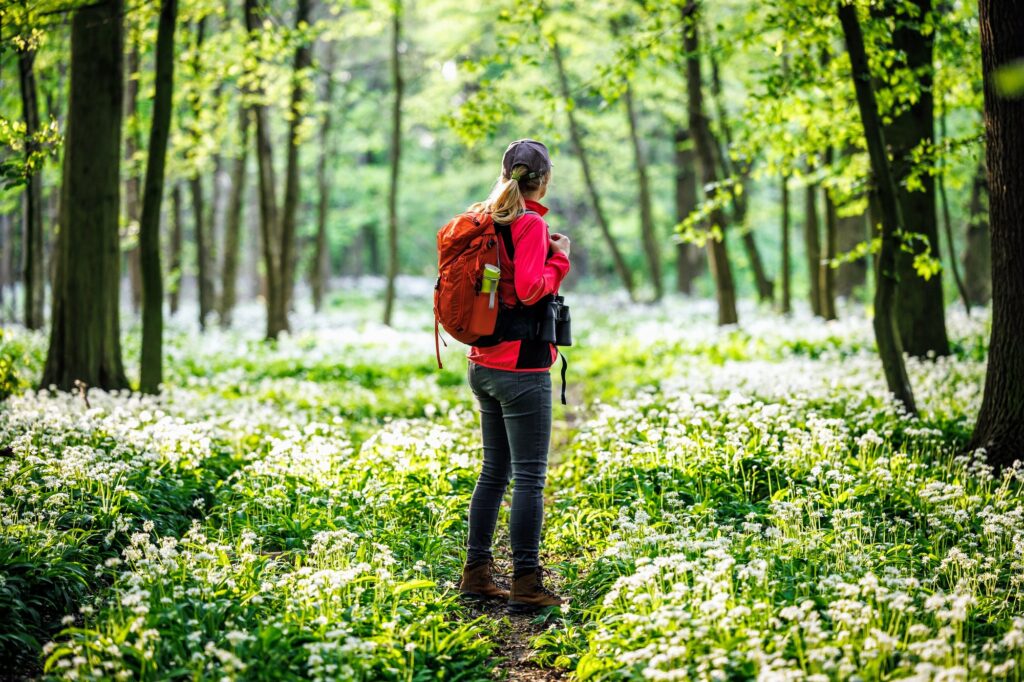Regular exercise is well known for its numerous health benefits, from preventing chronic diseases such as cardiovascular disease, diabetes, certain cancers and osteoporosis, to improving immune function, pain control and extending lifespan.
Exercise also significantly improves your mental health: Benefits include improved mood, reduced anxiety, and a lower risk of dementia and depression.
Despite these well-documented benefits, more than 75% of U.S. adults fail to meet the recommended goal of 150-300 minutes of moderate activity, or 75-150 minutes of vigorous physical activity, per week.
But the COVID-19 pandemic has highlighted the value of exercising outdoors, making parks and trails essential places to be physically active.
These natural environments can not only provide the same physical and mental health benefits as exercise, but may also amplify them.
Explore the benefits of exercising in nature
A recent study led by Texas A&M University School of Public Health professor Jay Maddock and senior vice president of the Land and People Institute Howard Frumkin took a closer look at the added benefits of exercising in natural environments.
Experts investigated factors that influence park visits, the level of physical activity in parks, and the resulting health benefits.
Studies have shown that exercising in natural environments such as parks has greater benefits than exercising indoors, but the long-term effects are unknown.
“Nevertheless, research is clear that natural environments can be effective places to promote physical activity,” Maddock points out. “People generally prefer to be outdoors, and parks, trails and community gardens are the most popular places.”
The appeal of outdoor playgrounds
There are several elements that can enhance the appeal of an outdoor venue: Physical features such as community centers, play areas, lighting, clear signage, and well-maintained natural features such as tree canopies and water bodies make these spaces more appealing.
Additionally, activities such as classes and festivals, a welcoming environment, a perception of safety, and a sense of connection to nature also contribute to the popularity of outdoor venues.
“Parks and trails are especially important because they are accessible and widespread, but access varies greatly by region,” Maddock noted. “For example, about 98 percent of Illinois residents live within a half mile of a park, compared with just 29 percent in Mississippi.”
Demographic disparities in park use
The study also highlights demographic disparities in park usage, with men more likely than women to use these natural spaces for exercise.
In Los Angeles, Black adults are less likely than White adults to participate in park activities, while English-speaking Latinos are similar, and Asian/Pacific Islander Americans are more likely to use these spaces.
“Some groups, including Black, Indigenous, and other people of color, immigrants, and refugees, face historical and ongoing discrimination that limits their access to natural spaces and routinely limits their access to quality parks,” Frumkin said.
“Children, seniors and people with disabilities also have challenges accessing natural spaces. Ensuring these areas are safe, easy to navigate and well planned can help increase usage.”
Strategies for Healthcare Professionals
Maddock and Frumkin suggest four strategies for health professionals to promote use of parks and natural environments.
Prescribe nature contact: Healthcare professionals can recommend that patients spend more time in nature. This is known as “nature prescribing” or “ParkRx.” Although more research is needed, existing research suggests that this approach is effective. Model behavior: Healthcare professionals can enhance their own health by participating in outdoor activities themselves, setting a good example for their patients. Community engagement: Healthcare professionals can participate in community efforts to promote the use of outdoor spaces, such as Houston’s Be Well Communities initiative, supported by MD Anderson Cancer Center. Funding and maintenance: Healthcare professionals can contribute to the creation and maintenance of parks and green spaces by allocating funds through community health needs assessments, Medicaid funds, and the Healthcare Transformation Foundation.
“It's clear that using parks and natural environments for physical activity can be a potentially powerful tool to simultaneously promote two important health behaviors,” Maddock said.
“This is especially important given that the majority of Americans don't get enough exercise or spend enough time outdoors.”
By understanding and promoting the synergies between exercise and nature, health professionals can play a key role in improving public health and well-being.
The study is published in the American Journal of Lifestyle Medicine.
—–
Liked this article? Subscribe to our newsletter for more fascinating articles, exclusive content and updates.
Check it out with EarthSnap, a free app brought to you by Eric Ralls and Earth.com.
—–



